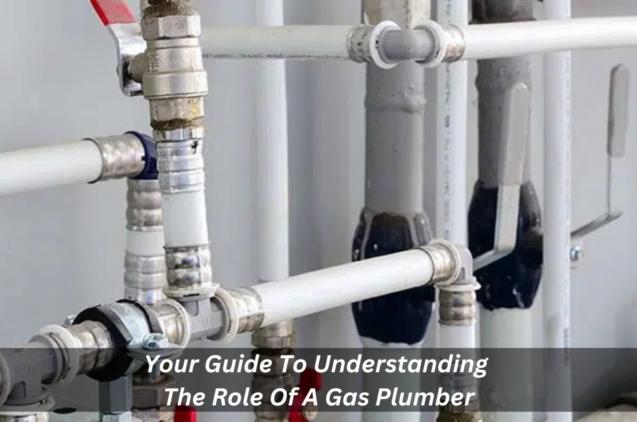
What Is Proper Maintenance On A Gas Water Heater?
A gas water heater is an important appliance in many homes. It provides hot water for showers, laundry and other tasks. Proper maintenance and regular service visits can help you save money on your energy bills while providing a steady supply of hot water.
When it comes to maintaining your gas water heater, there are several key areas you need to consider. First, you should have a professional heater service check the pilot light and natural gas connections at least once a year. Second, check the water temperature and pressure relief valve regularly to ensure it’s working properly.
Third, inspect the bottom of the water heater tank for rust or corrosion that could cause leaks or damage to the unit. Lastly, have a certified technician inspect the gas appliances for safety checks such as carbon monoxide levels and correct operation of the burner system.
In addition to these safety checks, regular services can also help prolong the life of your gas water heater by addressing issues like energy efficiency and cleaning out sediment from the tank’s drain valve. This can help reduce wear-and-tear on your system and make sure everything is running smoothly so you get more reliable hot water with less cost in energy bills.
Overall, proper maintenance on a gas water heater is essential to ensure its longevity and performance efficiency while saving you money on both energy bills and replacement costs down the line
Why proper maintenance is essential
Proper maintenance is essential to ensure your water heater works efficiently and reliably. Without regular service, you may encounter costly issues that can be easily avoided with routine maintenance. Regular services check for rust or corrosion on the bottom of the tank, inspect the pilot light, temperature and pressure relief valve, and check other gas appliances for safety. This helps prolong the life of your system while making sure you are getting a steady supply of hot water at an optimal temperature.
In addition to extending the life of your unit, proper maintenance also helps you save money on energy bills due to increased energy efficiency. Cleaning out sediment from the drain valve ensures optimal performance and prevents any unnecessary wear and tear on the system. Regular services and inspections also help detect any potential leaks or damage before they become major problems.
Overall, having proper maintenance done on your gas water heater is essential for reliable performance and long-term cost savings. It is important to have a certified technician come take a look at least once a year to make sure everything is in working order so you don’t end up paying for costly repairs or replacements down the line.
Maintenance Tasks for Gas Water Heaters
Gas water heaters are an essential appliance in any home, providing hot water for showers, dishwashing and more. However, like all appliances, gas water heaters require regular maintenance to keep them running efficiently and safely. Failing to maintain your gas water heater can lead to costly repairs or replacements down the line. In order to ensure long-term reliability and save money on energy bills, here are some important tasks that you should perform on a regular basis:
• Drain the tank periodically to remove sediment that can build up over time and reduce efficiency.
• Check the anode rod for rust or corrosion every 6-12 months. This component helps protect the tank from wear and tear.
• Inspect the pilot light and other gas appliances for safety.
• Test the temperature and pressure (T&P) valve at least once a year to make sure it’s working properly.
• Have your unit serviced regularly by a certified technician who can do a thorough inspection and make any necessary repairs or adjustments.
By performing these tasks regularly, you can help extend the life of your gas water heater while ensuring maximum energy efficiency and optimal performance. Don’t wait until it’s too late – start taking steps today towards the proper maintenance of your gas water heater!
Checking the Pilot Light Flame and Ignition System
If you own a gas water heater, it's essential to check the pilot light and ignition system regularly. Not only is this important for safety reasons, but it also helps ensure that your gas water heater runs efficiently and reliably.
A properly functioning pilot light flame should be blue in colour and remain on at all times; any yellow or orange tints indicate that there may be an issue with the ignition system. Additionally, make sure to check for any signs of rust or corrosion around the pilot light or other gas appliances.
Regularly inspecting your pilot light can help save you from costly repairs down the road due to poor maintenance. If you notice any issues with the flame or ignition system, search online for "gas heater service near me" and contact a certified technician who can provide professional service and advice on how best to keep your gas water heater running smoothly. Don't put yourself at risk – stay on top of your maintenance schedule and inspect your pilot light today!
Checking the Pressure Relief Valve Inspecting the Anode Rods
Regularly inspecting and servicing your gas water heater is essential for both safety and energy efficiency. Every homeowner should check the pressure relief valve and anode rods on their gas water heater at least once a year.
The pressure relief valve is designed to release pressure from the tank if it builds up too high, preventing an explosion or other hazardous incident. To check it, locate the valve near the bottom of the tank and make sure it’s not stuck shut. If you hear any hissing noises, that means there is a problem with the valve and you need to contact a certified technician right away.
Inspecting the anode rods helps protect your tank from rust and corrosion, which can cause costly damage over time. You can find them near the top of the tank; they will look like metal rods that are slightly discoloured. Replace any worn-out or broken rods as soon as possible to ensure your tank stays in good condition for years to come.
Taking care of regular maintenance on your gas water heater may seem like a hassle, but it’s worth it in the long run. Doing so will help keep your appliance running smoothly, cost-effectively, and safely for many years down the line. So don't forget: Make sure to check your pressure relief valve and anode rods regularly!
Cleaning Sediment From the Bottom of a Tank Type Model
Cleaning sediment from the bottom of a tank-type water heater is an important part of regular maintenance and upkeep. Over time, hard water minerals can collect in the tank and create a thick layer of sediment that can reduce your heater’s efficiency and even cause damage. Fortunately, cleaning out this sediment is relatively easy and should be done at least once a year as part of your regular maintenance routine.
To clean sediment from the bottom of a tank-type water heater, first, deactivate the gas supply or set it to pilot mode if it is an electric model. To start flushing the system, turn off the cold water supply valve and allow a few gallons to be drained out.
Attach a garden hose to the drain valve near the bottom of the tank and connect it to a bucket or floor drain for easy disposal of sediment or debris. To fill the tank, open all hot water taps in your home and let cold water run through until it is clear. Then close all hot water taps before reopening the cold supply for the tank refill.
By performing this simple cleaning task on a regular basis, you can help keep your gas or electric water heater running efficiently while reducing wear and tear over time. So don't forget: Don’t neglect this critical aspect of maintaining your gas or electric water heater!



